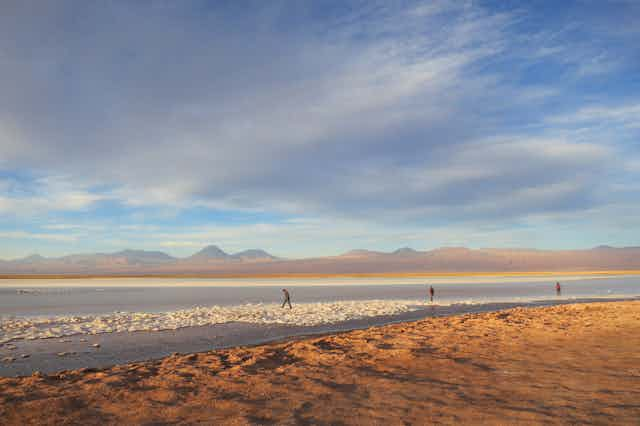Is water a basic human right or something with an inherent economic value? The answer to this question has led to decades of conflict in Chile.
In September, the private Chilean energy company Endesa announced it has given up its rights over water exploitation in five significant hydropower projects.
But water rights activists met the news with caution. Their fight for water rights for the Chilean people, they know, is far from over.
Across Chile, access to water is a major issue: its availability in Santiago, the capital, is predicted to fall by 40% by 2070.
If water scarcity troubles the capital, it’s already and every day reality for Indigenous peoples in Chile. In the northern regions, the impact of mining and the lack of regulation of water markets have led to water scarcity and the contamination of watercourses in local communities.

A water code rules by market economy
Since the introduction of the 1981 Water Code in Chile, water resources have been governed by strict market rules, with the government powerless to intervene. The code enshrines free market water economics to facilitate resource use and secure property rights under competitive conditions.
The code is unique in South America in that it allows the extraction of water supplies (both surface and ground) under market rules, without providing environmental safeguards, such as instream flows - the ability to keep water running in a river.
This has consequences for agriculture, the local environment, and Indigenous peoples’ sense of identity.
In practice, the code has failed to coordinate water use and resolve river basin conflicts, and has only increased private speculation, hoarding and the monopoly over water rights.
In 2005, the Chilean government attempted to address many of the issues with a set of tangential reforms, one of which forces water users to pay an annual fee to the state for unused water, in an attempt to avoid speculation. But the policy does not protect the water rights of Indigenous communities.

The Atacameño’s struggle for river access
The application of the 1981 Water Code has already affected the future of Indigenous communities in the north of Chile, such as the Atacameño, de Aymara and the Quechua.
The case of the Atacameño is particularly dramatic. Although this community had historically developed agricultural and cultural activities along the Loa River, after the application of the 1981 code, the community lost access to a large amount of water, as people were not made aware of the need to register their water rights officially.
In fact, several communities were told to register their water rights only for agricultural purposes, under the threat that they would have to pay additional taxes.

Although these communities applied for recognition of their traditional water rights under the 1993 Indigenous law, the situation proved intractable. They have tried to register their ancestral water rights with the local government since the early 1990s, but authorities did not recognise their ancestral use of the territory.
Consequently, large amounts of water in the Loa river were officially deemed to be “unused”, and opened to reallocation to other sectors – something chiefly solicited by companies in the water-intensive mining sector. Now Indigenous communities have only secured a portion of their original provisions, which represents a significant loss in cultural and productive terms. In this context, they were allowed to irrigate only during the day and had to redirect water back into the river at night.

Tensions rising
The conflict over water has increased local divisions and left Indigenous communities more vulnerable.
In the case of the Chiu-Chiu area, it can be seen how changes in water management have caused tensions in local relationships and generated internal differences, affecting overall social cohesion and ancestral property claims. For example, the fact that different age groups have been treated differently in terms of benefits has caused intergenerational conflict.
Members of Indigenous communities have responded to their straitened circumstances in creative ways. Artistic initiatives developed by younger generations have become a new way of claiming and demanding water justice, mixing ancestral claims over water and land with specific initiatives in housing and education.
Although pressure from resource companies has redefined many local communities and created divisions between generations, when dealing with water issues, internal differences are secondary. Resistance against water inequality remains the top priority for the Indigenous people of Northern Chile.
This is part of our ongoing series about water conflicts.

